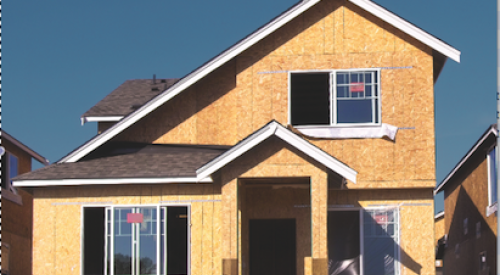| Five years ago, home builders confronted a liability insurance crisis. A worldwide hard insurance market and massive construction defect losses forced many underwriters to exit the home building sector. Liability insurance became hard to find, more expensive and more restrictive than ever. |
Home builders remain among the toughest classes of business to insure, but the insurance market has begun to soften for them. Large builders in particular are seeing increased competition among insurers; better terms and conditions; and even better pricing.
However, to qualify for the best coverage at competitive rates, builders must keep insurance at the top of their corporate priorities and invest the human and financial resources it requires.
Here, an overview of some of the most-used insurance structures and strategies, as well as a specific program builders must implement to thrive in the ever-challenging insurance environment.
Insurance Structures and Strategies
Now that insurers have returned to the residential marketplace and new players have emerged, builders have better liability insurance options. Selecting the right alternative requires a deep understanding of each individual builder's risk tolerance, the quality of the builder's operational risk management practices and the economics of the various insurance alternatives.
As the quality of subcontractor liability insurance coverage and additional insured endorsements continues to erode, owner-controlled insurance programs (OCIPs, or wrap-ups) have become a predominant liability insurance structure for builders. OCIPs can be written on a project-specific basis or on a rolling basis to cover all of the builder's projects.
Well-structured OCIPs offer advantages in terms of builder control of the insurance, broader coverage and, in many cases, lower insurance rates. But OCIPs come with many pitfalls and practical challenges, such as calculating and collecting insurance credits from subcontractors; allocating responsibility for deductibles and self-insured retentions (SIRs); and handling of coverage issues if claims arise. Experienced risk management and insurance resources are essential to implement a successful OCIP.
Many large builders and virtually all housing giants employ captive insurance companies to cover general liability and other insurance risks. A captive insurance company offers the home builder an opportunity to efficiently finance its risks up to the level dictated by the builder's risk appetite, then access to conventional excess and/or reinsurance markets for high limits to protect against catastrophic losses.
Captives offer financial flexibility (including potential tax benefits); the ability to retain risk on a broader and more economical basis than traditional insurance; and an opportunity for savings if the builder's loss control and risk management initiatives are successful. As with OCIPs, captives require a high level of care in design, implementation and administration to achieve optimal financial and operational performance.
Combined Warranty/General Liability Insurance Program
Traditional general liability insurance policies require a formal lawsuit to trigger the insurer's duty to defend and indemnify. Moreover, such policies prohibit the builder from making "voluntary payments" without the insurer's consent.
These structural limitations can leave the builder without liability coverage in pre-lawsuit scenarios where the builder wishes to proactively address construction issues before they reach the litigation point of no return.
Zurich Insurance addresses these critical issues in its innovative Home Builders Protective (HBP) insurance program. The HBP is written on a special policy form that provides liability insurance coverage for certain builder's warranty and customer service expenses without the need for a suit. If the claim ultimately goes to litigation, the HBP policy provides enhanced liability insurance protection without most of the typical policy exclusions that restrict coverage for construction defect claims.
The HBP is available to builders with annual revenues of $100 million or more. It is subject to strict and extensive underwriting. For large builders who can qualify because of their proven risk management and customer service programs, the HBP is an attractive alternative to conventional liability insurance policies.
To succeed in the new insurance environment, sophisticated builders should implement a five-part program:
- Start earlier. Thanks to the proliferation of non-standard insurance policy forms and the increase in insurance options, many large builders find three to six months of lead time is necessary to plan for and execute an effective insurance placement. If the builder has staggered renewal dates for different lines of its coverages, the renewal process becomes a year-round focus.
- Apply specialized expertise. Because access to insurance is relationship-based, successful builders work with insurance brokers who specialize in the residential construction industry and know the underwriters. The new risk management team also includes insurance coverage counsel knowledgeable about the builder's operations and exposures and about the intricacies of current insurance policy forms and structures.
- Create persuasive submissions. The builder's submission (the application and extensive supporting documentation) is a critical element of a successful insurance placement. Home builders are now evaluated according to "the new underwriting," which focuses not only on financial information but also on the nature and performance of the builder's operational risk management practices. These include construction quality assurance; safety and loss control; contractual risk transfer; and highly responsive customer service programs.
- Beware non-standard policy forms. One of the most difficult challenges the new underwriting climate creates is insurers who use non-standard policy forms and endorsements. Virtually every underwriter has a unique suite of policy forms and endorsements. Each requires careful review and comparison. Subtle changes in wording can have major coverage implications. Implement a Comprehensive, Integrated Risk Management Plan. Large builders are retaining much more risk than ever before. This results not only from higher deductibles and SIRs but also from coverage restrictions, such as exclusions for prior work.
- To minimize uninsured costs within the retentions and to preserve their policy limits, builders must implement a comprehensive, integrated non-insurance risk management program. Such a program identifies and manages risks at each stage of the development process, from entity structuring and land acquisition to construction operations, sales and marketing, and long-term customer service.
By helping builders more effectively tell their risk management story to the underwriters, this five-part plan can yield immediate results. For the longer term, implementing a non-insurance risk management program will result in fewer and less severe claims. Builders then will be free to focus their energies on the business of building.
Jeffrey D. Masters is a litigation partner and co-chair of the Development Risk Management Practice Group at Cox, Castle & Nicholson, a Los Angeles-based real-estate and construction specialty law firm. Masters has extensive experience structuring and implementing risk management and insurance programs for builders nationally. Visit the company's site at coxcastle.com.












